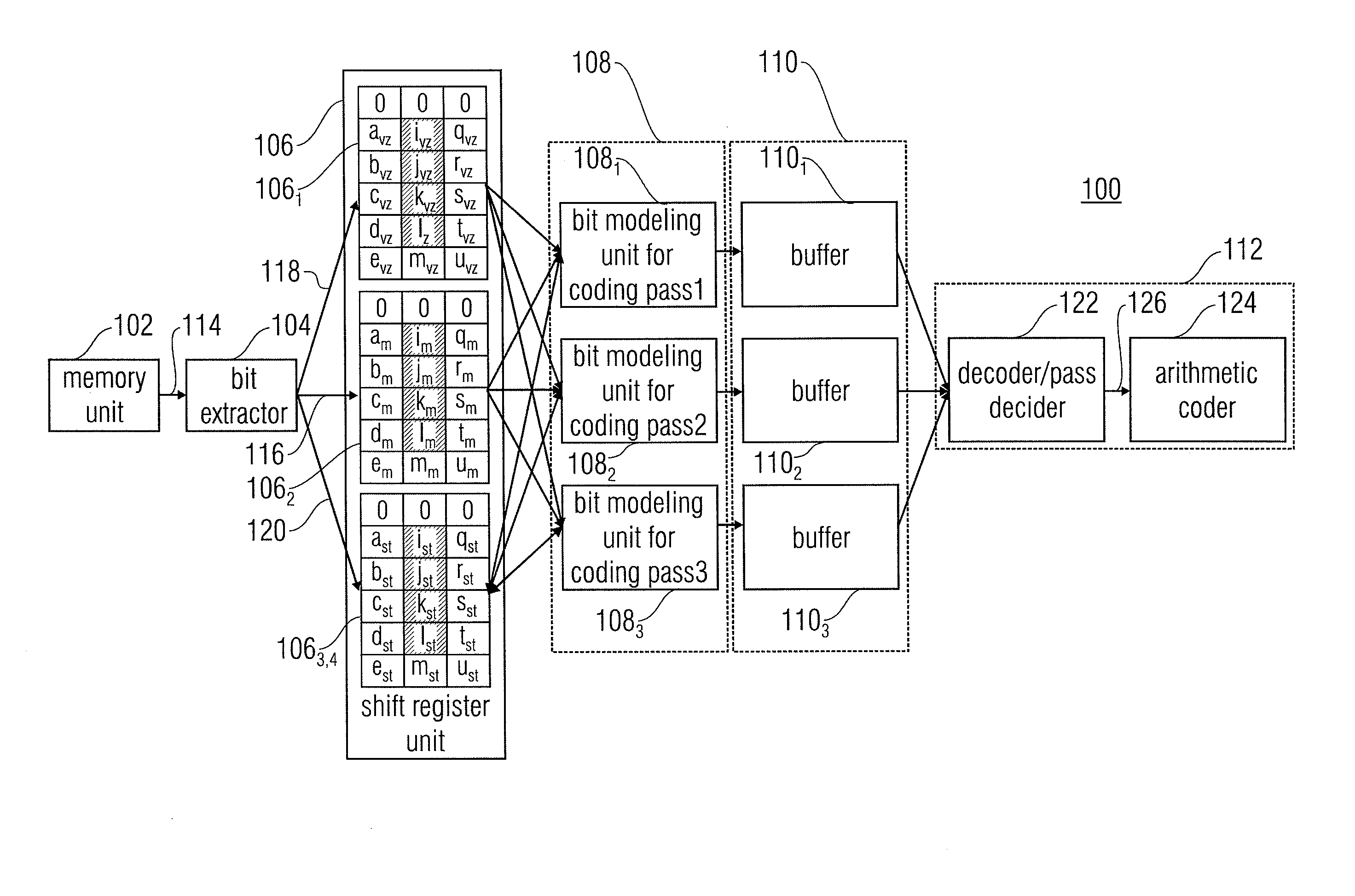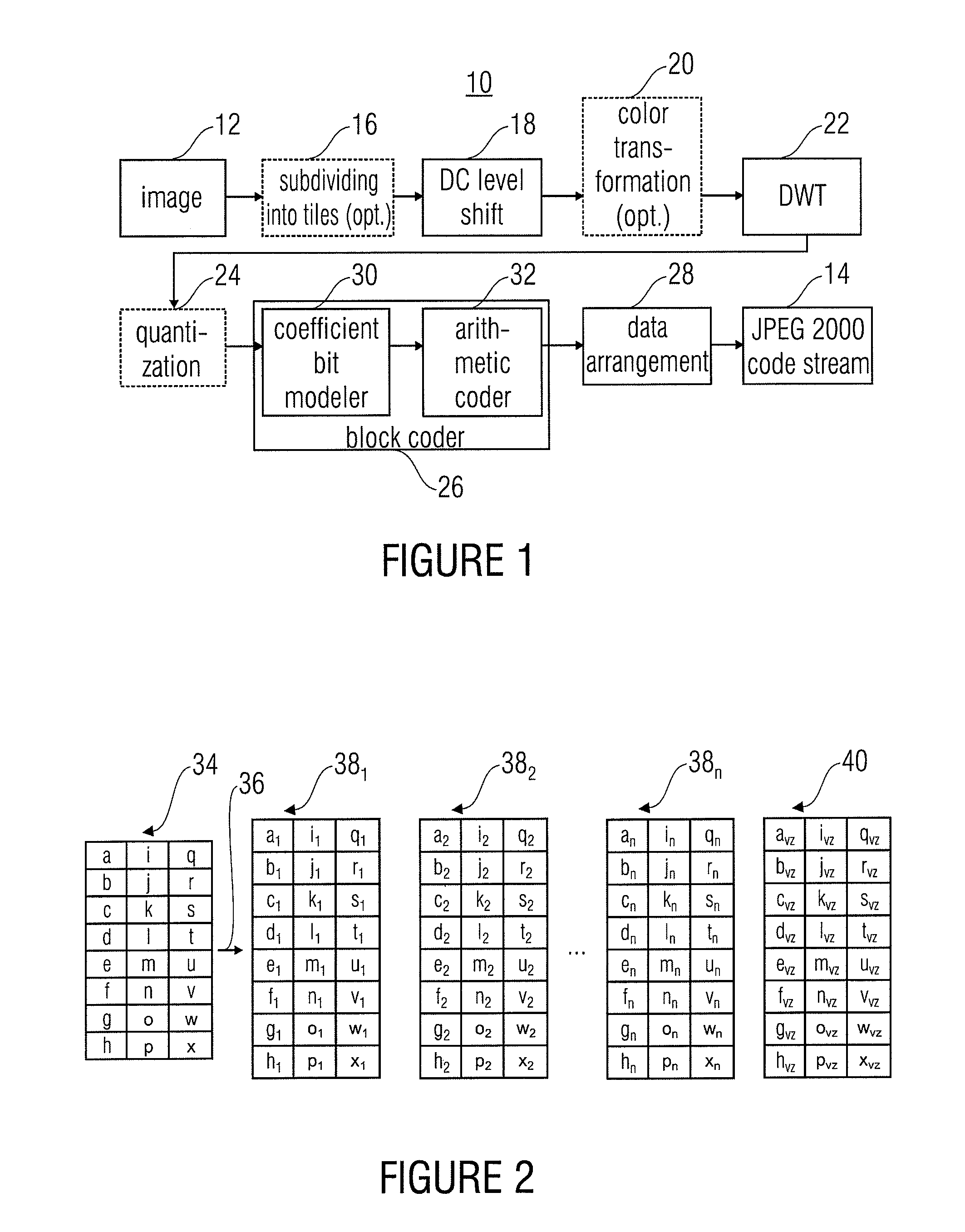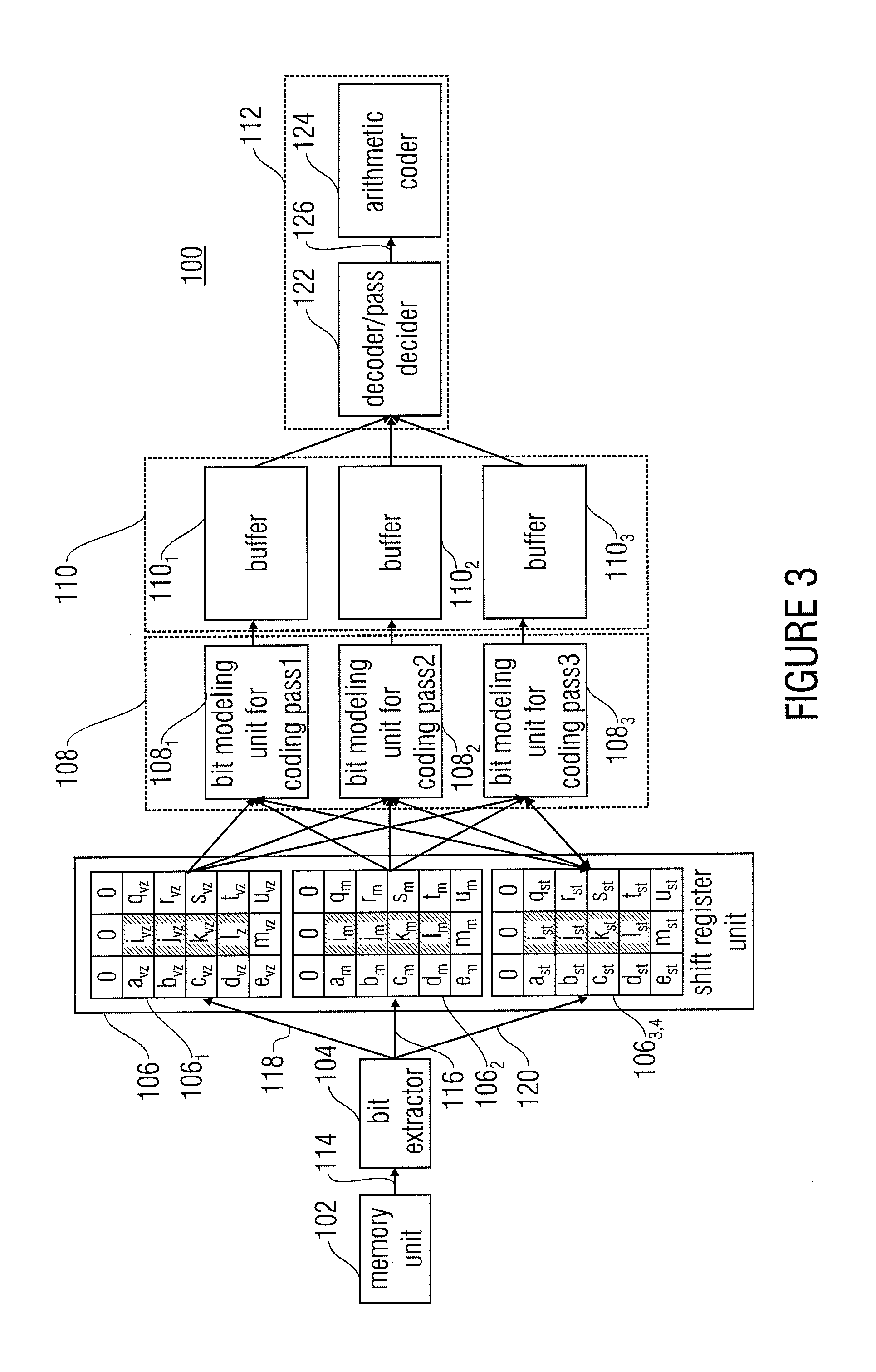Device and Method for Coding a Transformation Coefficient Block
a technology of transformation coefficient and coding device, applied in image data processing, character and pattern recognition, instruments, etc., can solve the problem of massive resource consumption, and achieve the effect of fewer processing cycles and fast implementation of coding
- Summary
- Abstract
- Description
- Claims
- Application Information
AI Technical Summary
Benefits of technology
Problems solved by technology
Method used
Image
Examples
Embodiment Construction
[0044]FIG. 1 shows an image compressor 10 as an example of a case of application wherein the embodiments described below may be advantageously used. The image compressor 10 of FIG. 1 is configured to compress a source image 12 consisting of samples or pixel values arranged, e.g., in columns and rows, into a coded data stream, or code stream 14. For this purpose, the compressor 10 of FIG. 1 comprises, for example, a series connection of, optionally, a tile subdivider 16, a DC portion level shifter 18, optionally, a color transformer 20, a transformer 22 for spatial spectral decomposition, an optional quantizer 24, a block coder 26 and a data arranger 28. The tile subdivider subdivides the image 12 into, e.g., rectangular image areas, so-called tiles. Further processing is performed per tile, so that further compression in the individual tiles takes place independently. The DC signal level shifter 18 performs, within each tile, a DC signal shift which is uniform across all of the pixe...
PUM
 Login to View More
Login to View More Abstract
Description
Claims
Application Information
 Login to View More
Login to View More - R&D
- Intellectual Property
- Life Sciences
- Materials
- Tech Scout
- Unparalleled Data Quality
- Higher Quality Content
- 60% Fewer Hallucinations
Browse by: Latest US Patents, China's latest patents, Technical Efficacy Thesaurus, Application Domain, Technology Topic, Popular Technical Reports.
© 2025 PatSnap. All rights reserved.Legal|Privacy policy|Modern Slavery Act Transparency Statement|Sitemap|About US| Contact US: help@patsnap.com



